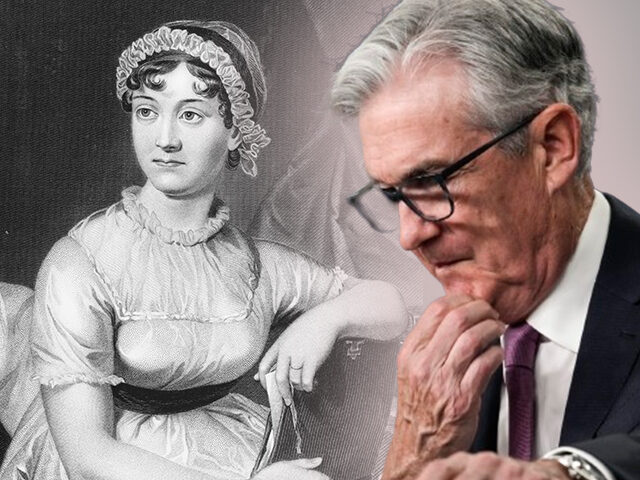Jerome Powell’s Austenian Economics
Maybe Jerome Powell is taking lessons in prudence from Jane Austen.
In her novel Persuasion, Austen tells the tale of Anne Elliot waiting for the right moment to act on her love for Captain Wentworth. Her refusal to marry Wentworth early on is not a rejection of his merits but a testament to her attachment to the wisdom of patience.
Powell has lately been sounding like the reluctant Anne.
“Our confidence is rising. We just want some more confidence before we take that very important step of beginning to cut interest rates,” Powell said.
Importantly, the decision of the Fed to start cutting interest rates bears a strong resemblance to the decision to marry. It can be reversed but only with a great deal of awkwardness, some economic difficulty, and often a reputational cost.
Data Over Narrative
The decline of inflation last year has set many hearts aflutter and loosed demands for imminent rate cuts. Disinflation is like a suitor with lots of promise but still without a proven track record. As we’ve argued consistently, there are serious reasons to doubt that disinflation is really going to have staying power. Why rush the marriage?
A curious form of argument has crept up in recent days in favor of rate cuts. The idea seems to be that the Fed should ignore recent signs of re-emergent inflation in order to avoid a potential downturn in the future. If the Fed waits too long to cut rates, it will be too late. Better to launch a preemptive war against the possibility of recession.
But this is a counsel to let narrative triumph over data. Even the Leading Economic Index is no longer heralding recession this year. The people who downplay what they are now calling “one week” of bad data on inflation (it’s really several months, but never mind) cannot plausibly expect us to make policy based on zero weeks of bad data on employment. Actually, the labor market is so strong we would say there have been negative weeks of bad data on employment, but time does not work that way.
The choice to hold off on cutting interest rates, much like Anne’s decision to wait to marry Wentworth, is not about inaction in the face of unquantifiable risks but about seeking a deeper assurance of stability. Austen’s counsel from the pages of Persuasion would seem to be that the best decisions come from waiting for the right conditions.
Waiting for Persuasive Disinflation
Powell’s reference to wanting “more confidence” before acting can be seen as a nod to this Austenian perspective. It’s about seeking a level of certainty in the economic outlook that transcends the immediate data, aiming for a deeper understanding of the economy’s trajectory. This requires patience, a willingness to wait for the economic reality to unfold further, ensuring that when the decision to cut rates is finally made, it is grounded in a comprehensive assessment of the economic landscape.
We find ourselves watching this economic courtship unfold, where disinflation flirts from across the room, and the Fed, with a discerning eye, waits for a sign of true, lasting commitment. Powell, in essence, is asking the economy to prove its devotion, to show that it can be a partner in creating a stable future rather than a whirlwind romance.

COMMENTS
Please let us know if you're having issues with commenting.